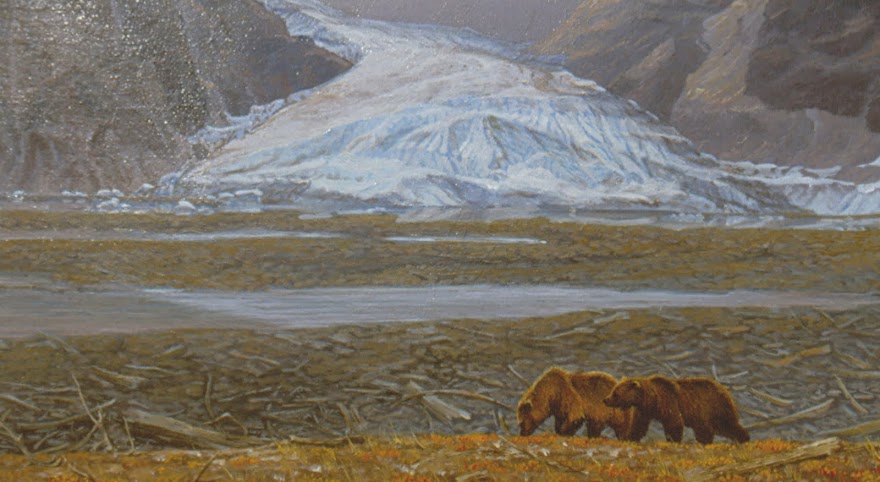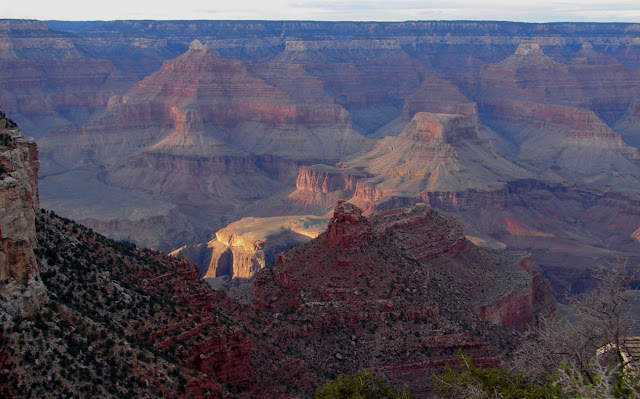Several weeks ago I was flipping my way through old reference photo albums; hoping to find something to inspire a painting. As I have stated many times in the last year or so, I have been struggling through a serious creative drought. I just don't have much enthusiasm to paint.
I went out and got a real job, and tried to find some inner tranquility with the decision to abandon my life's main passion. This is not the first time that I tried to quit painting, but it is the most profound dearth of artistic desire I have ever experienced. Anyway, this photo of a Torrent Tyrannulet in Peru struck me as a potential subject for a modest painting. One minor quibble I had was the bird's lack of color. I felt that a tropical subject ought to be more colorful.
Since it was a type of flycatcher, I realized that I could use the same pose on a different species of flycatcher, like the above Ornate Flycatcher from the Ecuadorian cloud forest.
I have painted Ornate Flycatchers before, this was an 8x10" boring little painting that I eventually painted over. The birds are not so bad, but the setting of the painting is lame, especially the leaves. Ornate Flycatchers come in two forms, those with rufous tails from the eastern slope of the Andes Mountains, and the darker tailed birds from the west slope of the Andes. My photo is a west slope bird, while the above painting depicts east slope birds.
This is the painting that I have been working on for the last few weeks when I could find the time. It is an 11x14" acrylic on gessoboard, so far untitled.
The difference between this painting and others that I have tried to paint in many months is that this one felt so natural. I was almost back to my old self while I did this, mostly in just two days.
Do you remember this 8x10" Colima Pygmy Owl painting that I posted a few months ago. It was the first painting that I managed to complete since last summer sometime. The owl was passable, but I hated the setting it was in.
I struggled to come up with a better composition but ran out of enthusiasm with this version. Any better? No. Time will tell if I ever come back to it again.
I'll end this post with a last close-up of the Ornate Flycatcher that I completed today.
I went out and got a real job, and tried to find some inner tranquility with the decision to abandon my life's main passion. This is not the first time that I tried to quit painting, but it is the most profound dearth of artistic desire I have ever experienced. Anyway, this photo of a Torrent Tyrannulet in Peru struck me as a potential subject for a modest painting. One minor quibble I had was the bird's lack of color. I felt that a tropical subject ought to be more colorful.
Since it was a type of flycatcher, I realized that I could use the same pose on a different species of flycatcher, like the above Ornate Flycatcher from the Ecuadorian cloud forest.
I have painted Ornate Flycatchers before, this was an 8x10" boring little painting that I eventually painted over. The birds are not so bad, but the setting of the painting is lame, especially the leaves. Ornate Flycatchers come in two forms, those with rufous tails from the eastern slope of the Andes Mountains, and the darker tailed birds from the west slope of the Andes. My photo is a west slope bird, while the above painting depicts east slope birds.
This is the painting that I have been working on for the last few weeks when I could find the time. It is an 11x14" acrylic on gessoboard, so far untitled.
The difference between this painting and others that I have tried to paint in many months is that this one felt so natural. I was almost back to my old self while I did this, mostly in just two days.
Do you remember this 8x10" Colima Pygmy Owl painting that I posted a few months ago. It was the first painting that I managed to complete since last summer sometime. The owl was passable, but I hated the setting it was in.
I struggled to come up with a better composition but ran out of enthusiasm with this version. Any better? No. Time will tell if I ever come back to it again.
I'll end this post with a last close-up of the Ornate Flycatcher that I completed today.



































